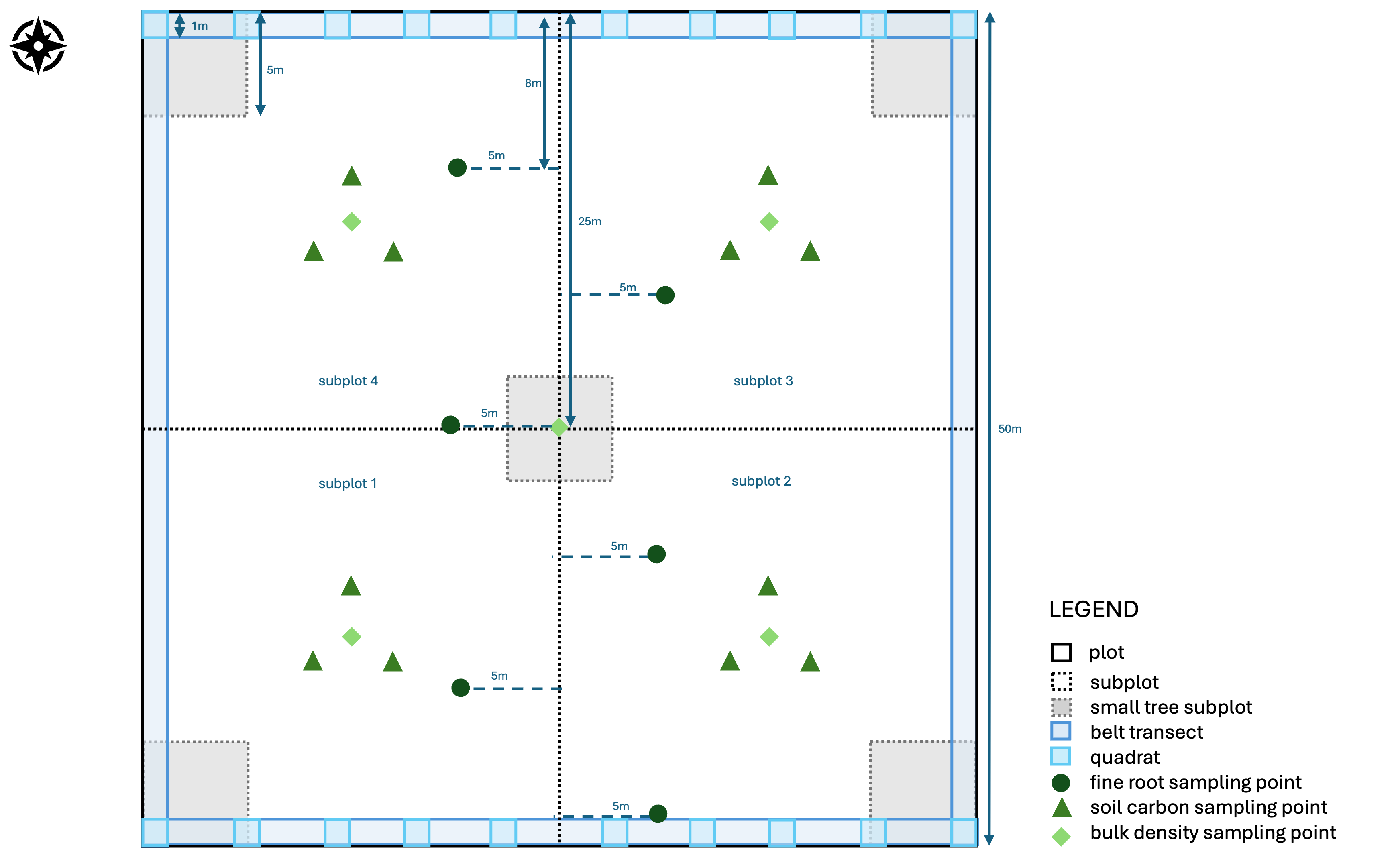
Standard Operating Procedures - Fine Roots Survey
KEY DETAILS
- Principal Investigator
- Dr. Lucia Nadal, Dr. Nicola Stevens
Date - 14 July 2025
Version - 1.0.2
Programme - Rangelands Carbon Programme
Key partners - University of Oxford, University of Liverpool
Contact email - lnadal@naturalstate.org
1. PREAMBLE
Natural State’s research methods and activities are detailed by a set of accepted Standard Operating Procedures (SOPs). These documents describe the steps involved in all Natural State research methodologies, from data collection to data processing and storage. Each SOP documents key methodological details for a specific data type. The objectives and background of the projects or surveys these methods are used for, features of the study area where these methods are applied, and details on survey and sampling designs for these methods may be found in survey Design Documents (DDs), which are available in the Related Documents section below or may be perused in the main NS Design Documents documentation page.
2. GLOSSARY
3. METHODS OVERVIEW
The fine roots survey involves collecting soil samples from which all fine roots are extracted in order to quantify the amount of carbon sequestered in this pool. It usually occurs at plots where other carbon pools are also being measured.
3.1 METHOD AIMS
The fine roots survey is designed to:
- Collect soil samples from which fine roots can be extracted to quantify fine root biomass for stock carbon estimation
3.2 METHODOLOGICAL BACKGROUND
These methods for monitoring fine roots were developed by Natural State in collaboration with the University of Oxford and the University of Liverpool, as part of the carbon pool plot methodology. The methodology requires the establishment 50 m X 50 m plots, where sampling takes place.
4. SAMPLING PREPARATION
The equipment mentioned in the list below needs to be gathered, checked and packed before sampling begins. If any sensors need to be configured prior to commencing sampling this will be documented below the equipment list.
4.1 EQUIPMENT LIST
- tablet with S123 loaded
- handheld GPS
- 6 X 50 m measuring tapes
- soil auger
- 6 ziploc bags per plot
- QR code stickers
4.2 DEVICE CONFIGURATION
- The S123 app needs to be loaded onto the tablet and the CPP or GEM Soil Carbon Survey needs to be loaded. Currently fine roots can only be collected with soil carbon samples, although we plan to create a stand alone fine roots form.
5. SAMPLING PROCEDURES
These methods for sampling fine roots involve establishing 50 m X 50 m plots, divided into four subplots. Six fine root samples are collected per plot.

5.1 FINE ROOTS SURVEY
- Navigate to the plot using a handheld GPS.
- Establish the extent of the 50 m X 50 m plot by running a 50 m measuring tape 25 m north and 25 m south and by running a second one 25 m east and 25 m west, intersecting at the plot centroid.
- Use another four 50 m measuring tapes to demarcate the 50 m edges of the plot.
- Open the S123 App and collect the metadata required by the CPP/GEM Soil Carbon Survey.
- Start in with the transect 1 (southern transect) that runs from west to east through subplot 1 and 2. There is no need to measure out the transects. The first sampling point will be in the centroid of subplot 1, the second at the boundary of subplots 1 and 2 and the third in the centroid of subplot 2.
- Use a soil auger to take a soil sample at sampling point 1. The soil auger should be inserted to a depth of 20cm, meaning the entire bucket will be augered into the ground until soil reaches the top of the bucket.
- Place soil from the auger into a ziploc bag.
- Label the ziploc bag with a QR code and scan into S123.
- Repeat steps 6-8 for sampling points 2 and 3 along the southern transect.
- Repeat steps 5-9 for sampling points 4,5 and 6 along transect 2 (northern transect).
- Pack up equipment and move to the next plot.
6. POST PROCESSING
Samples collected in the field should be handed over to the lab team using the Lab Sample Log S123 form.
6.1 SAMPLE PROCESSING AND STORAGE
The lab team is responsible for the processing of these samples according to the X SOP.
6.2 DATA ENTRY AND UPLOADS
S123 forms need to be sent to the cloud upon return to internet or cell phone reception.
7. RELATED DOCUMENTS
7.1 DESIGN DOCUMENTS
7.2 OTHER RELEVANT SOPS
7.3 DATA ELEMENTS
Survey Design
Data Collection
Dashboard
8. REVISION AND VERSION HISTORY AND DESCRIPTION
v1.0.0 SOP translated into markdown in May 2025. v1.0.1 Minor revisions to reflect field protocol in July 2025. v1.0.2 Updated PIs to reflect staffing changes at Natural State.